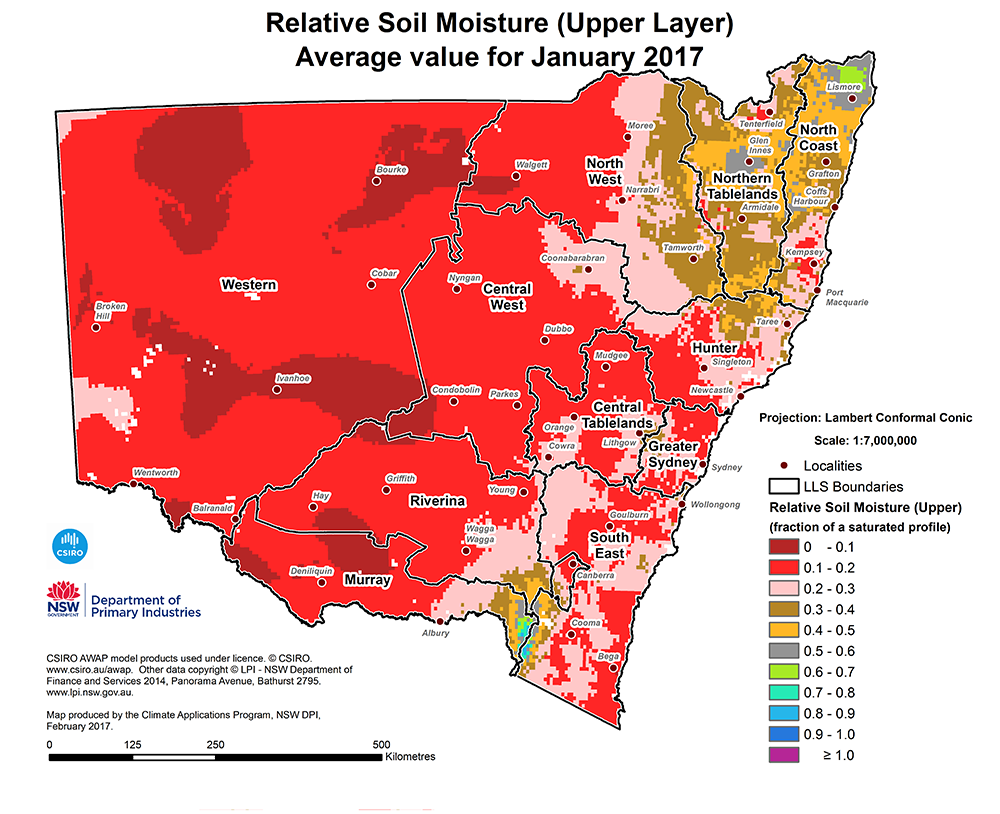
Scorching summer seasonal conditions
22 Feb 2017

The scorching summer seasonal conditions impacted on the state’s primary producers through the third-warmest January on record.
NSW Department of Primary Industries (DPI) Seasonal Conditions Coordinator Ian McGowen said there was little relief from the record breaking heat despite January rainfall being near average across 65 per cent of the state.
“Below average rainfall was received across 21 per cent of state in areas of coastal, central and south eastern NSW,” Mr McGowen said.
“Rainfall across the state ranged from 1-404 mm, with most of NSW receiving between 10-50 mm during January.
“Thunderstorm activity provided some higher falls across the north west, northern slopes, northern tableland and the north coast.
“It was the third-warmest January on record across NSW with daytime and overnight temperatures well above average, particularly in the east and north of the state.
“Due to the above average temperatures and high evaporation experienced during January, pasture growth slowed across most of NSW.
“Topsoil moisture remained relatively low across much of inland NSW, with declines across the south east, central and southern areas. The rainfall received over areas of the north east provided a slight improvement to topsoil moisture.
“Stock condition remained generally good, although in some areas the high temperatures and declining feed quality and availability resulted in stock losing condition. Supplementary feeding has recommenced in some areas.
Mr McGowen said during January the high temperatures accelerated summer crop growth and also increased crop water requirements.
“In the north, dryland crops have been stressed and yields are likely to suffer, particularly dryland sorghum and cotton,” Mr McGowen said.
“Crop development in the south remains slightly delayed due to the late sowing time. The yield potential for irrigated crops in the south is average to above average, particularly for rice and cotton.”
The Bureau of Meteorology’s rainfall outlook for February to April indicates drier than normal conditions are likely, with temperatures likely to be warmer than normal across most of NSW.
To prepare for drought conditions primary producers are encouraged to visit Droughthub.
More information
Media contact: Anne Brook (02) 6763 1163 or 0477 358 305

